RECOIL OFFGRID Survival Foraging for Wild Edibles
In This Article
Every day we step outside, we’re surrounded by an abundance of plants. Trees, bushes, vines, flowers, herbaceous plants, and more fill our woodlands, grow in fields, and pop up through cracks in the pavement. While we may take note of these plants, most do not give them a second thought. Even though many people see plants as part of the background, the reality is much more complex. Plants absorb carbon dioxide and create oxygen through their normal life processes. Their root systems keep the soil in place preventing erosion caused by wind and rain. They provide food, shelter, and health-enhancing effects for countless species. While humans passively benefit from the creation of oxygen and the binding of soil, we don’t think much about a wild plant’s capacity to feed us and enhance our health — unless you’re in the practice of foraging.
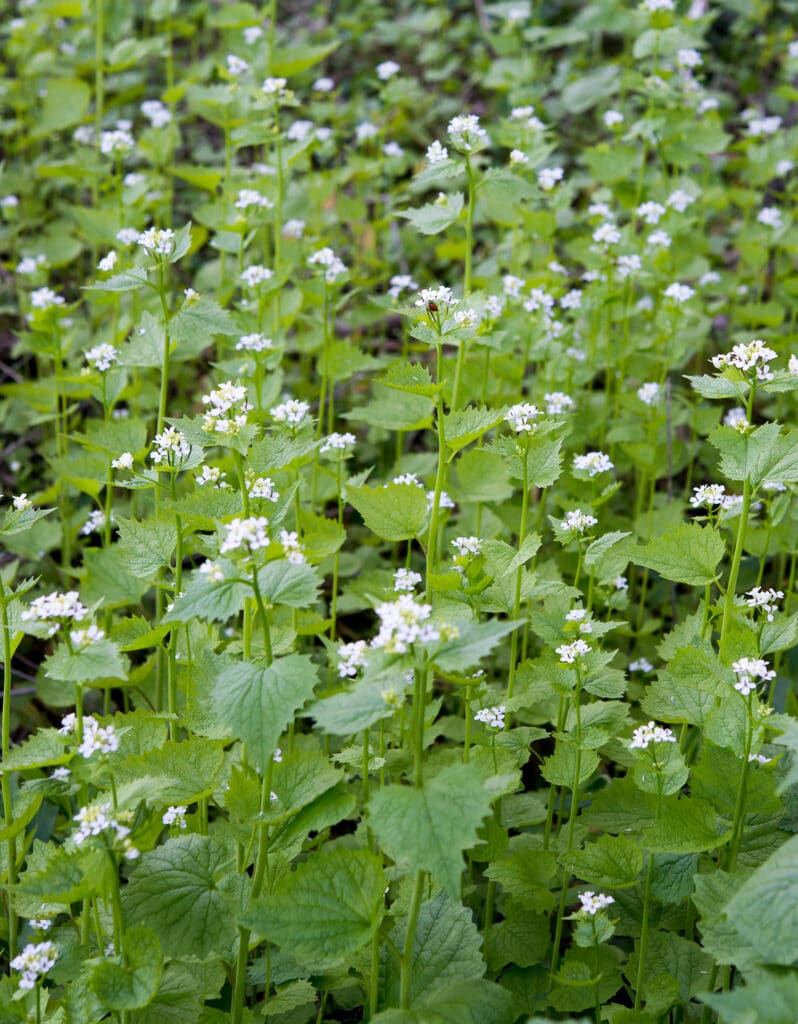
Garlic mustard, the plant that started my foraging journey.
In the context of this article, foraging is the act of gathering wild plants and fungi as a food source. While this may sound like a simple concept, the reality of foraging is far more complex. Foraging isn’t something that most people can pick up and do, as it requires knowledge and skill to do it safely and effectively — and yes, there’s even plenty to forage in urban environments.
Being a successful forager requires some baseline knowledge in a few different scientific disciplines:

While this seems like a lot, it’s only the tip of the iceberg, as more advanced concepts in foraging such as herbalism — commonly known as plant medicine — requires knowledge in basic chemistry and medical science. Despite the complexity, foraging has numerous benefits, making it a priority for anyone who takes preparedness and self-reliance seriously.
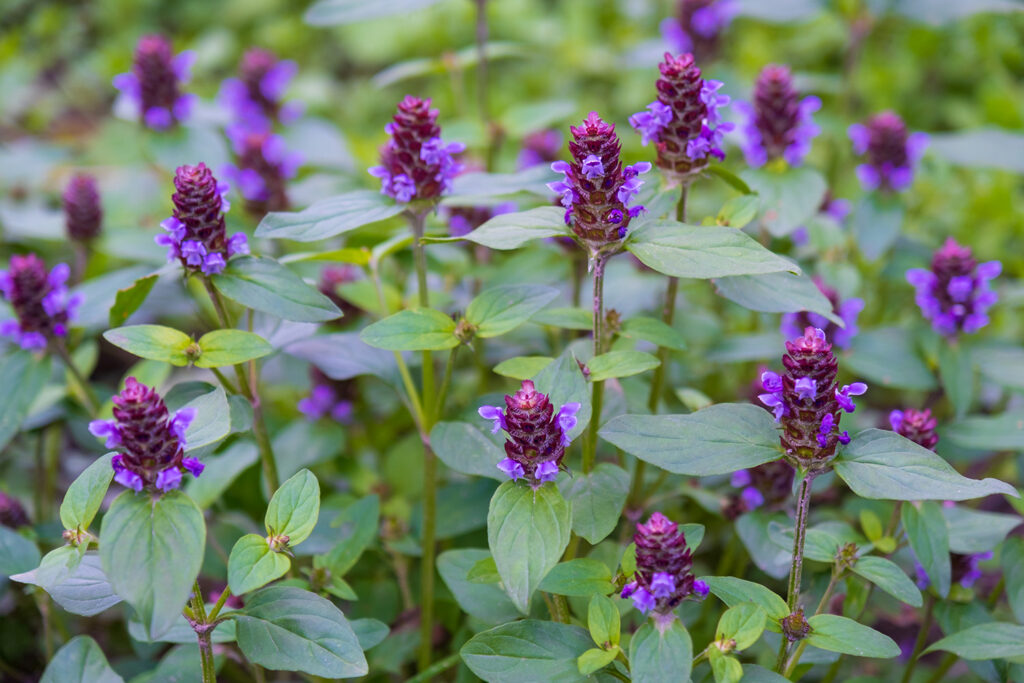
Prunella Vulgaris, commonly called Heal-All, has been used for centuries to treat wounds due to its antiseptic qualities.
The benefits of foraging are tremendous for people who are interested in emergency survival or generally living a self-reliant lifestyle. Let’s look at some of them:
With all these benefits, it’s hard to deny the importance of foraging for self-reliant living and emergency preparedness. Despite the benefits, the broad nature of the topic can be intimidating for the newcomer, and many are scared off or don’t know where to start. So, let’s dispel those fears and talk about how you can get started.
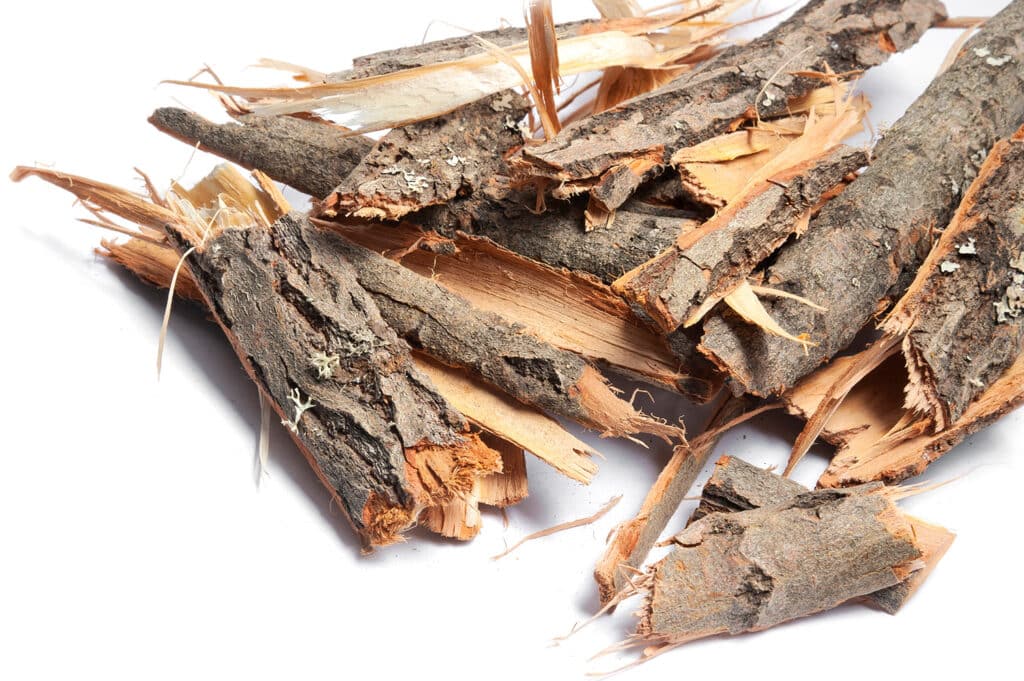
Willow bark contains salicylic acid, a natural pain reliever. A similar compound was eventually adapted into aspirin.
You don’t need to be a scientist to get started, all you need is the desire to learn, time to practice, some basic gear, and a whole lot of patience. I will only be able to cover the basics in this article, but I will also provide ideas and resources should you want to take your foraging skills to the next level.
The Golden Rule of Identification
Before you harvest and eat anything, you must first be able to positively identify the plant. Never eat a plant or fungi you have not positively identified with 100-percent confidence. I spent an entire year learning to identify plants and fungi before I put a wild plant in my mouth.
Factors in Positive Plant ID
When identifying a plant, we want to look at several parts of the plant. Leaves, stem, and roots are generally always present. Becoming familiar with a plant’s leaf shape, texture, edges, and distribution is vital. Stems can be smooth, hairy, or woody. Color on both stems and leaves make all the difference in identifying a plant. Sometimes a root shape or type can be the only way you’ll be able to positively ID a plant. Later in the season, flowers and fruit can also be used to positively identify a plant.
The environment is also a major factor in plant identification. Some plants only grow in certain regions, and others will only grow in certain conditions. If you think you have identified a plant, but the growing conditions are wrong, you may be looking at a look-alike.
Toxic Plants and Look-Alikes
Beyond just learning how to identify what you can eat, you should be able to identify what you can’t eat. While most seasoned outdoor enthusiasts can ID harmful plants like poison ivy or poison oak, some toxic plants, at first glance, look like edible plants. The example I always show my students to demonstrate toxic look-alikes is Queen Anne’s lace and water hemlock.
Queen Anne’s lace is a type of wild carrot that’s edible and nutritious. Water hemlock is a highly toxic look-alike that I hear is also delicious, with a side of being deadly! While at quick glance they look similar, a detailed look at their flowers, leaves, and growing environment will quickly tell these two plants apart.
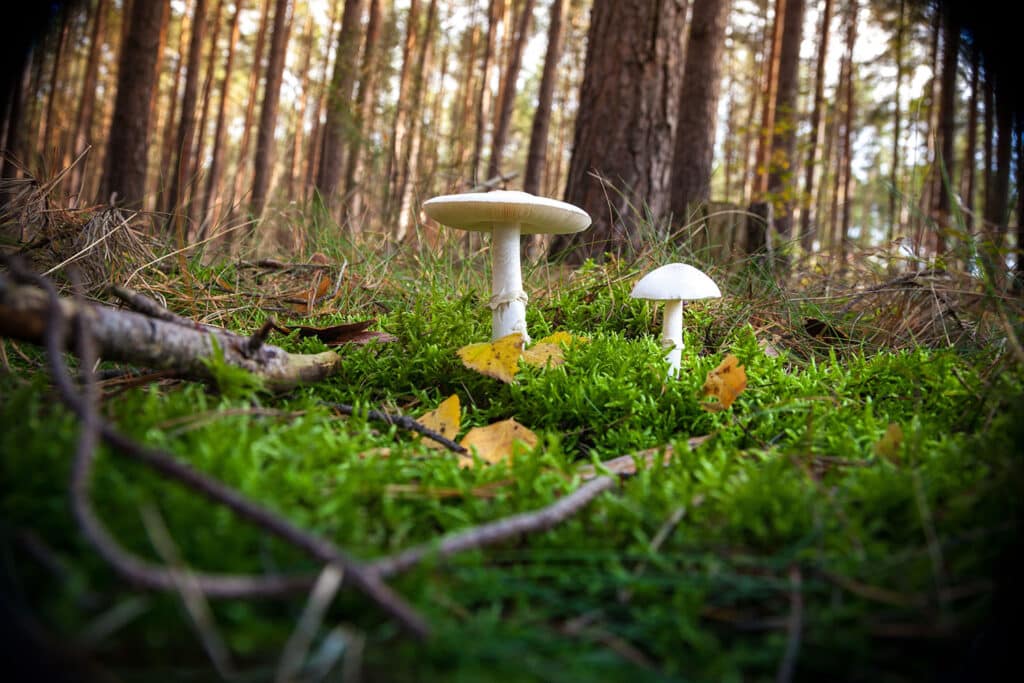
While said to be tasty, the destroying angel mushroom contains amatoxins that cause severe damage to the kidneys and liver. Cases of poising from this mushroom have a 50-percent mortality rate.
Mushrooms and Fungus
Fungi can be more challenging, and I always recommend people start with plants and take their time with fungi. Many plants can make us sick, but few can end our life. Fungi is a different story, with mushroom varieties having names like death cap, destroying angel, and deadly dapperling, it should be evident that extreme caution needs to be taken when foraging any fungi.
The Field Guide
The very first thing a prospective forager needs is a good field guide. This book is a resource that you can use at home to learn how to identify edible plants, where to find them, what part of the plants are edible, and the best times to harvest those plants. Your field guide should always come with you when foraging for quick reference.
I recommend Mark “Merrywether” Vorderbruggen’s Foraging Field Guide. Vorderbruggen is a passionate and experienced forager who owns Foraging Texas, where he provides in-person foraging instruction and a robust website filled with resources. This guide covers commonly found edible plants across the United States, excellent pictures and identification guidance. As a bonus, the book includes some ways to prepare your foraged finds into delicious meals.
Notebook
Taking notes in the field is an important part of foraging. You may not always be able to positively identify a plant in the field, take a picture on your phone of the leaves, stem, flower, and fruit of the plant. Make notes as to the plant’s location and where it’s growing. Does it grow in wet soil or near a river? Does it grow in the sun or shade? What plants that you can identify are growing near it. All this provides valuable clues as to what that plant may be. When you return from the field you can use this information to research what your subject plant may be.
Take a Class
The fastest way to initially learn how to positively ID plants is to take an in-person class with an experienced foraging professional. If you don’t have local in-person classes and traveling isn’t an option, reputable online classes are available through organizations like The Herbal Academy.
What About Plant and Mushroom ID Apps?
These apps may seem convenient, but they’re notorious for misidentifying plants. While these can function as a preliminary identification tool or a cross-reference, I wouldn’t bet my health or safety on their accuracy.
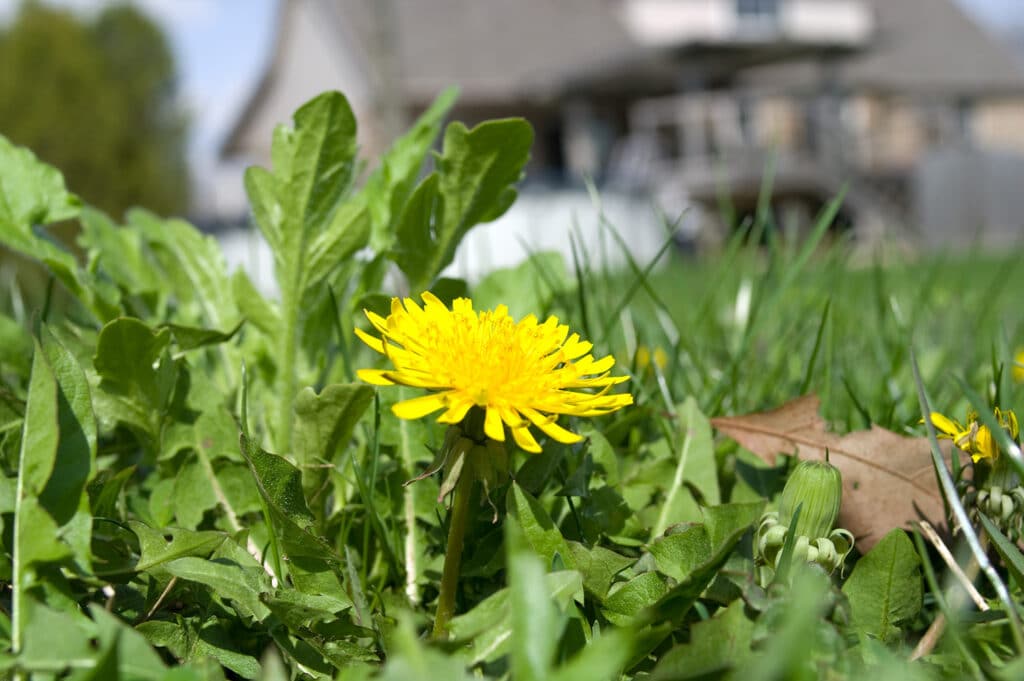
It may be tempting to grab nutrient-dense dandelions off the lawn, but we must beware of potentially toxic fertilizers and pesticides the plant may have been exposed to.
Once we have reached the point where we are comfortable identifying plants, we can begin harvesting edible plants. Keep in mind just because we have positively identified a plant doesn’t mean we should harvest it. Let’s look at a few reasons why.
Environmental Toxicity
Plants can absorb toxins from their environment. This is why we should avoid harvesting plants from areas that may have higher toxicity levels. For example, heavily trafficked roadsides aren’t ideal foraging locations, as plants absorb toxins from exhaust of passing vehicles. The same can be said for plants on lawns and other manicured garden spaces.
Dandelion is one of the most nutritionally dense plants we can eat, and it packs several medical uses as well. While it may be tempting to snatch some off the lawn, we must consider pesticides used on the lawn. These do not just exist on the outside of the plant but may have been absorbed through the root system.
Legal Reasons
Many state parks and forests prohibit foraging, as do some national parks. Privately owned preserves will also prohibit foraging. Violating these rules can often come with a hefty fine. While it may seem like a victimless crime, these prohibitions usually exist to protect threatened and endangered species or to protect food and habitat of organisms within the confines of the park or preserve.
Remember, we’re not the only ones who can benefit from these plants. While we can’t harvest in these areas, they still make a great place to practice our identification skills.
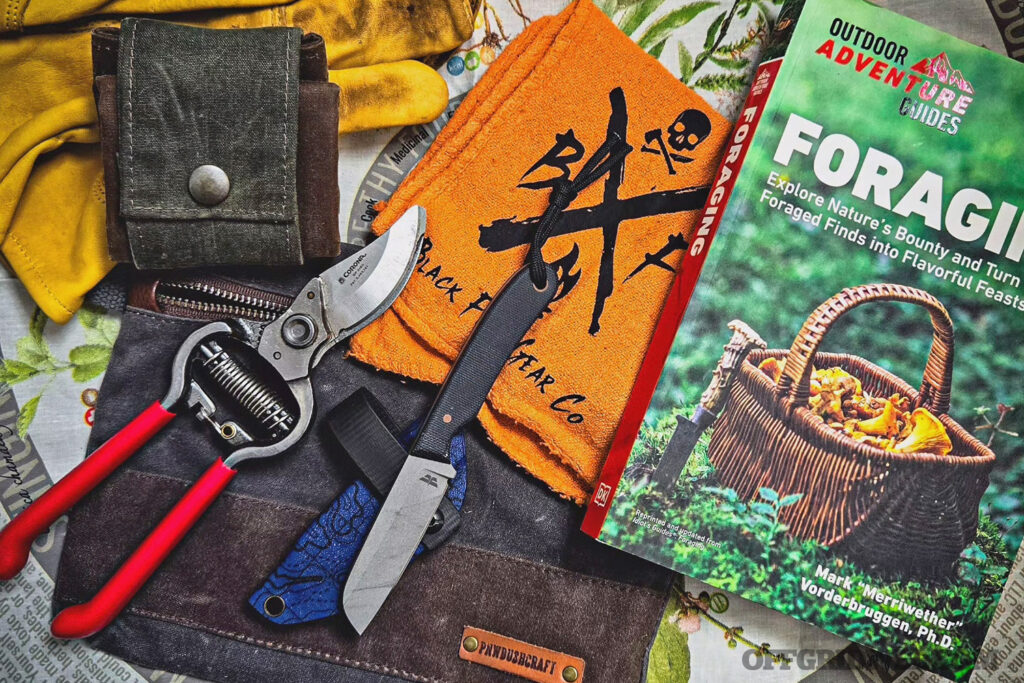
Having a well-rounded foraging kit can make gathering plants and fungi safer and more efficient.
Once we’ve identified a good place to forage, we’re going to need some equipment to get the job done. Let’s go over what I keep in my foraging kit.
Cutting Tools
Harvesting plants requires cutting tools, this allows us to minimize the damage done to a plant if only harvesting a portion, ensuring the resource is there for later use.
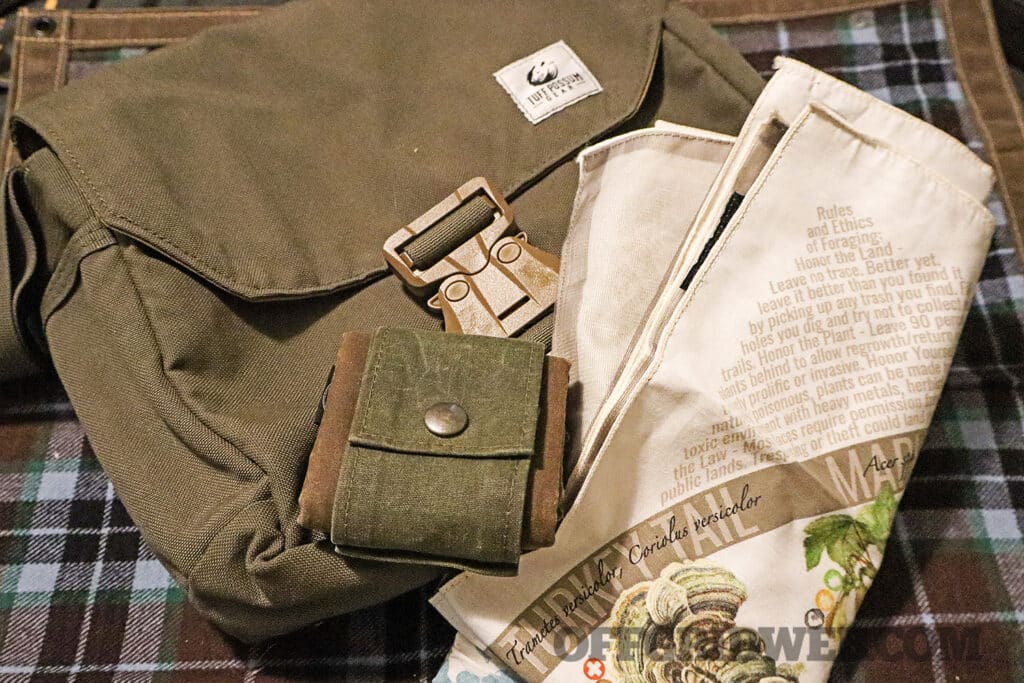
Once you have harvested your forager’s bounty, you’ll need to store it somewhere. These compact storage options allow for lightweight carry when not in use, but provide ample space for your harvest.
Storage
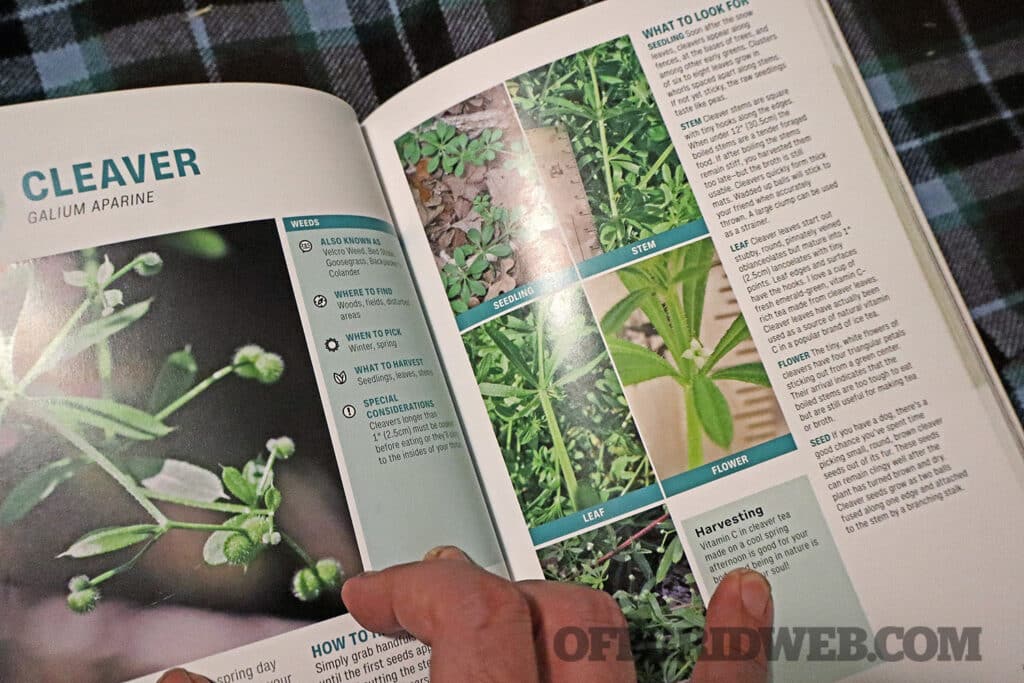
The detailed full-color pictures and helpful information found in Vorderbruggen’s field guide can help you ID plants from all over the United States.
Knowledge and Reference
Protection and Comfort
Other Helpful Additions
While I like to keep my kit lean, the addition of a few items can enhance your personal foraging activities.
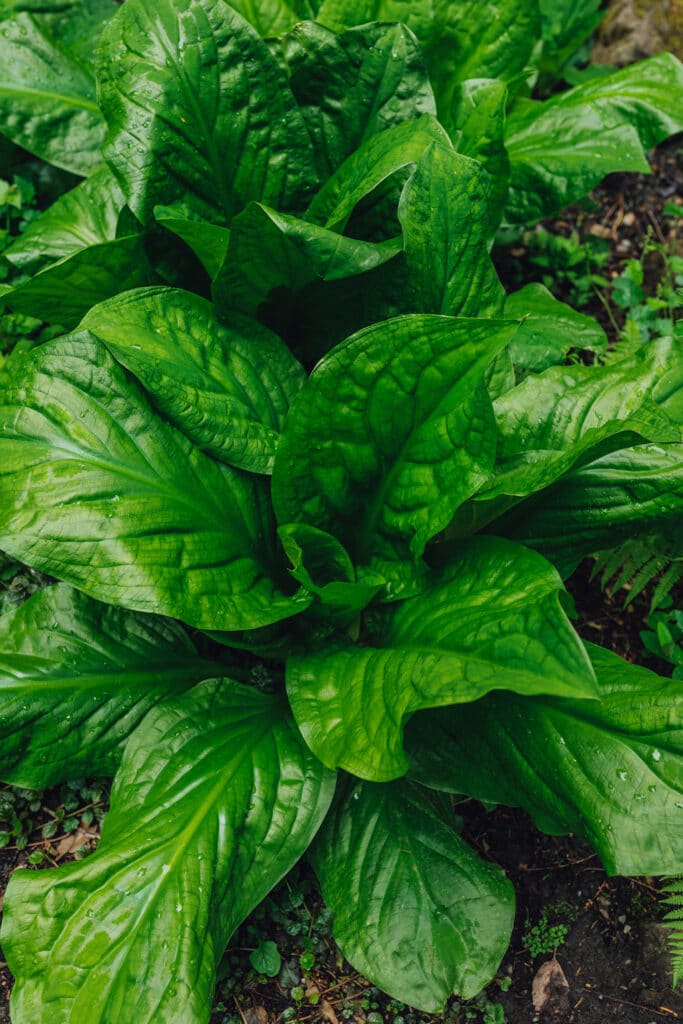
While skunk cabbage is technically edible, it contains calcium oxalate, which can have a burning sensation in your mouth. In large amounts it’ll cause gastric upset and can lead to the development of kidney stones.
Congratulations, you’ve made it through about 1 percent of your foraging journey! However, there are many ways to take your foraging practice further. Taking in-person classes, especially in different regions will help you enhance your knowledge base. Courses in any of the scientific fields can provide a far deeper understanding of plants and how they interact with our body.
You can also study programs in plant-based first aid and medicine. Believe me, you’ll never live long enough to learn it all, but with a little practice, you will find identifying different plants comes easier and you may surprise yourself how much information you will retain.
Foraging Texas > foragingtexas.com
Nicole Apelian > nicoleapelian.com
The Herbal Academy > theherbalacademy.com
Alexis Nikole Nelson > youtube.com/c/BlackForager
Liz Neves > gatheringground.nyc
Shane Alden > thewilddryad.com
Don’t miss essential survival insights—sign up for Recoil Offgrid's free newsletter today!
Check out our other publications on the web: Recoil | Gun Digest | Blade | RecoilTV | RECOILtv (YouTube)
Editor's Note: This article has been modified from its original version for the web.
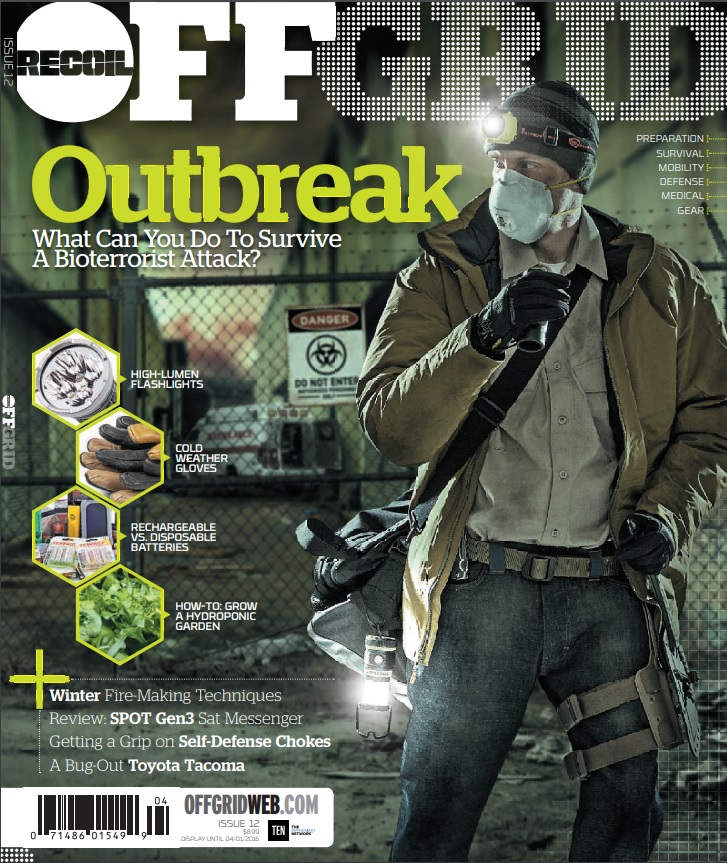 STAY SAFE: Download a Free copy of the OFFGRID Outbreak Issue
STAY SAFE: Download a Free copy of the OFFGRID Outbreak Issue
No Comments